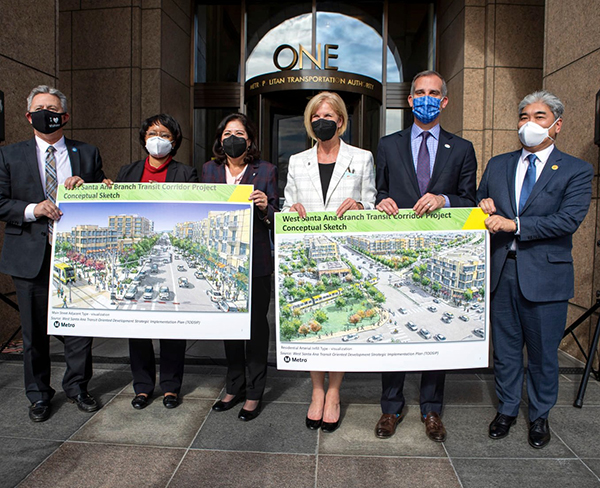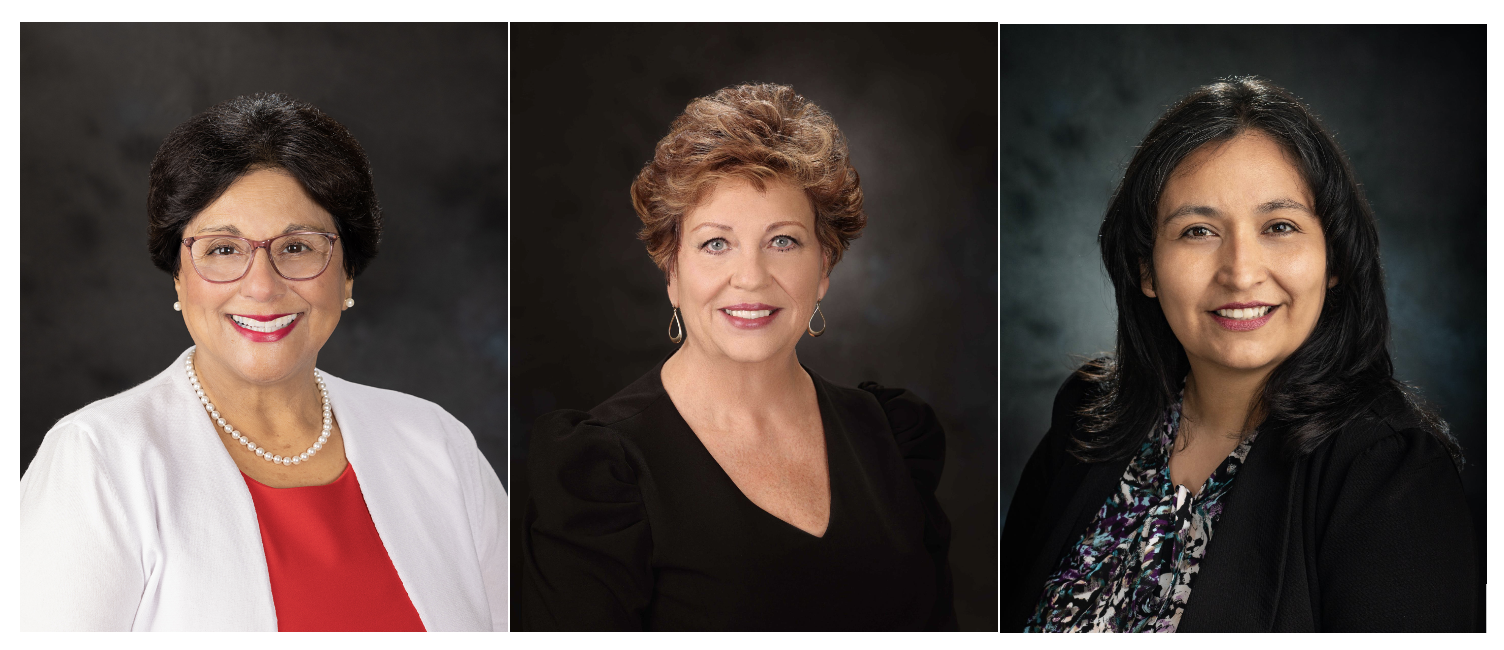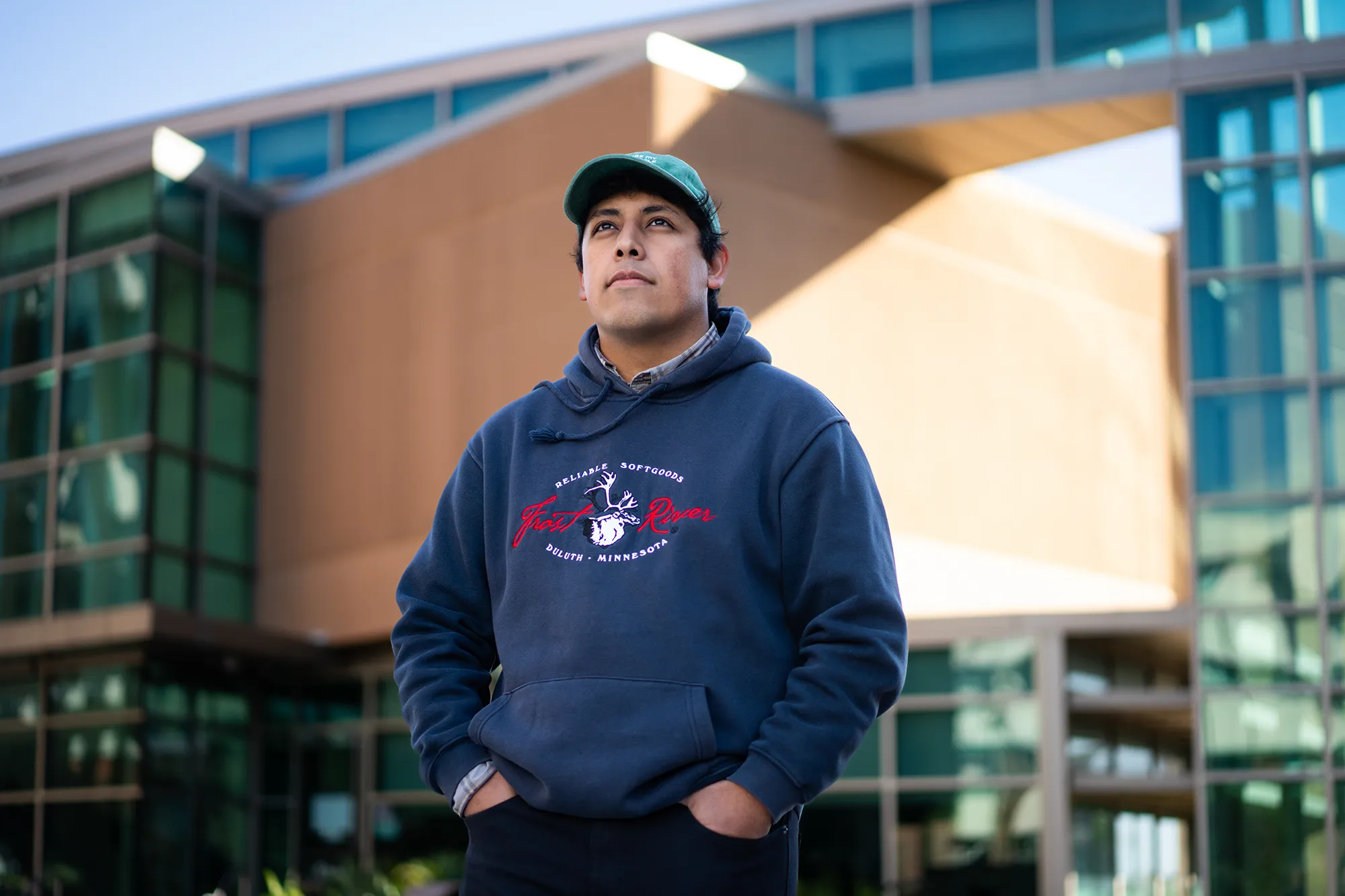By Alfredo Santana
Contributing Writer
LOS ANGELES — By unanimous vote, the 12-member board of directors of the Los Angeles County Metropolitan Transportation Authority approved construction of a 14.8-mile light train route connecting Southeast Los Angeles with the rest of the county’s rail transportation network.
The historic vote Jan. 27 confirms that the West Santa Ana Branch Corridor, as the line is known, will receive funding to start a two-way rail connection with communities stretching from Artesia to Huntington Park, with a temporary transferring station to Los Angeles.
Furthermore, board members voted to explore funding sources to link the light rail route to Union Station downtown, saying the corridor would be incomplete until it reaches downtown.
Last year, project manager Meghna Khanna and members of the MTA staff advised the board of directors to select Alternative 3 out of four suggested construction models, in part due to its geographical coverage with stations lined up in Cudahy, Bell, South Gate, Downey, Paramount and Artesia.
Also, Alternative 3 offered the option of a less expensive design in case the board had limited or no options to secure additional funds to build the remaining four-mile stretch either with aerial railroads along Alameda Street or underground.
Before last year’s inflation, Alternative 3 had estimated costs between $4.9 to $5.1 billion.
Similarly, estimates for the line extension running from a planned elevated intersection at Slauson Avenue to Union Station would increase costs from $4.5 to $5 billion, money the public transportation agency currently does not have.
County Supervisor and MTA board Chair Hilda Solis said at a virtual pep-rally organized 30 minutes before the Jan. 27 meeting that the WSAB project benefits all residents in Los Angeles, and will bring cleaner, economic and more reliable public transportation.
“I can’t wait for this to happen,” Solis said. “Today is a fantastic day and it’s exciting for individuals in L.A. as well as for people from Southeast Los Angeles to Little Tokyo.”
Los Angeles Mayor Eric Garcetti, also a board member, said he questioned the efficiency and added burden the projected Slauson station would inflict upon the already busy A-line that connects downtown Los Angeles with Long Beach, but voted yes to advance the overdue project.
“One thing I’ve learned over 8 ½ years, is that if you get 20, 15, 5% of what you want, it moves forward,” Garcetti said. “Many have questioned what the heck is happening? I’ll tell you what, we are moving things forward.”
Board member and county Supervisor Janice Hahn said the Metropolitan Transportation Authority would consider a railroad underground extension with a Little Tokyo station.
Solis ordered staff to start a construction feasibility study to find out if an aerial or underground design would better fit the area with the objective to control expenses and causing less impact on housing and local businesses.
“This project won’t get complete until we get to Union Station,” Hahn said. “This project won’t get complete until we get a one-seat ride to Union Station.
Garcetti said that a transfering Slauson station to downtown would create congestion that would spillover to East Los Angeles and nearby communities, and suggested using special bus lines to transport riders.
Board members said they plan to use Measure M funds to accelerate construction, but the project will need additional federal funds to come to fruition.
Approved by county voters in 2016, Measure M collects a half-cent tax on sales to expand public transportation, retrofit bridges, repair streets and sidewalks, and to ease traffic.
As of December 2021, nearly $262.3 million in Measure M funds had been collected to cover public transportation projects, the agency posted on its website.
Garcetti said Gov. Gavin Newsom told him he would assign additional funds to help link the new line to Union Station.
“We won’t stop pushing until we get the line from Artesia to downtown Los Angeles,” Garcetti said.
The light rail project received widespread support from more than 23 elected officials representing Southeast Los Angeles cities.
The MTA “has secured almost $7 billion of federal New Starts funds over the last 40 years, and it’s now time for Southeast L.A. to have our own turn,” Whittier City Councilman and MTA board member Fernando Dutra said. “This is [our] top federal priority, and I am pleased to partner with my colleagues to accelerate the project’s schedule and secure funding from our partners.”
Bell City Councilman Ali Saleh said the project would ease pollution in an area besieged by particle emissions out of trucks and cars running on freeways and foul smells from industrial sites in Vernon.
“I’m happy to join in the effort of this very significant project,” Saleh said. “Around 80% of our residents do not have access to cars and rely on public transportation here in Southeast Los Angeles.”
Assemblywoman Cristina Garcia, who represents much of the Southeast area in the state Assembly, said she wants to ensure the line is completed in a timeframe that makes sense.
“This is a vital project as well for poorer communities,” Garcia said. “We want to see this project complete, because every day we are growing a little bit older and sicker.”
Although the corridor’s initial phase was slated to be ready in 2028 in synch with the Olympic Games, the MTA has pushed back its opening date until 2041 and beyond 2050 for the extended downtown stretch.
The news did not set well with several city representatives.
Downey City Councilwoman Blanca Pacheco said the region cannot wait much longer to witness the light train project running.
“It took 30 years for [the MTA] to commit to connect us to downtown L.A.,” Pacheco said. “We don’t want another 30 years to complete it.”
South Gate City Councilwoman Denise Diaz said the region has been overly oppressed by polluters and deserves cleaner public transportation soon.
“For too long we’ve lived under pollution, superfund sites and the people have asthma,” Diaz said. “I want the youth to have a one-seat ride to downtown. We are tired as a community of being disenfranchised.”
Also, the vote kicks off planning negotiations with the state Department of Transportation to resolve issues like the aerial boarding station at the intersection of the Glenn Anderson (105) Freeway and efforts to manage safe street intersections with Union Pacific and building river bridges with the U.S. Army Corps of Engineers.












